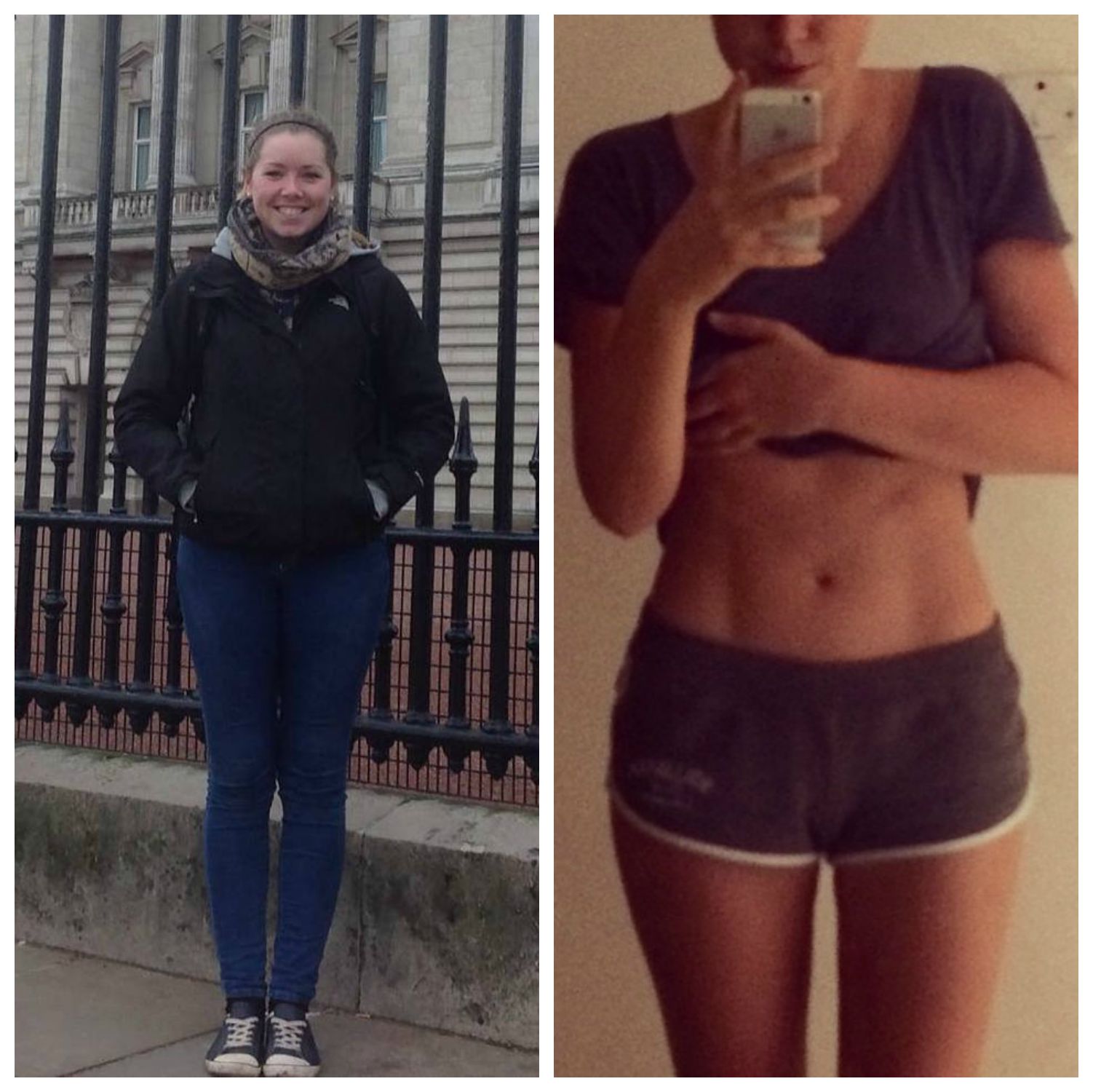How Only Being Allowed to Eat for 8 Hours a Day Will Transform Your Body

Have you ever thought about how easy access we have to food? If I’m hungry, I just go rustle around my fridge or to the local shop (normally the latter because I’m a terrible organised foodie).
I first heard of intermittent fasting from Mark Sisson, author of the Primal Blueprint. As we all do, I’ve tried numerous diets to try and lose weight. I’ve done the Atkins diet, gluten-free diet, flat belly diet and the Paleo diet.
I am not shy to say I have no restrictions when it comes to food. I was raised in a family of chef’s so good food has always been plentiful! But when I reached 21, I realised that Mum’s special recipe shortbreads had piled a load on my belly.
After many failed diets, I came across the Paleo and was especially intrigued about intermittent fasting.
Why We All Struggle Daily With Our Weight
I want to take you on a little trip to caveman times. Where you would walk around with your big club, living off the land and hunting animals. You would go out everyday but it wasn’t always guaranteed you’d catch that deer. So sometimes it was inevitable you’d go hungry.
Skip forward to our generations and we don’t have to worry about where our next meal is coming from. I mean with one phone call, a hot cheesy pizza will be at your door in 30 minutes.
As Dr. Mercola explains better:
“The reason so many struggle with their weight is because they’re in continuous feast mode and rarely ever go without a meal. As a result, their bodies have adapted to burning sugar as its primary fuel, which down-regulates the enzymes that utilize and burn stored fat.
Fasting is an excellent way to “reboot” your metabolism so your body can start burning fat as its primary fuel, which will help you shed your unwanted fat stores.
Once your insulin resistance improves and you are normal weight you can start eating more frequently, as by then you will have reestablished your body’s ability to burn fat for fuel—that’s the key to sustained weight management.”
Our bodies have changed since we were cavemen and if we want to have healthy waistlines again, we need to look at what we did then and bring it into the 21st century. Welcome to intermittent fasting!
What Are The Benefits Intermittent Fasting?
The benefits of intermittent fasting seem to reach to every part of your body: from your genes to your heart.
1. It Changes the Function of your Cells, Genes and Hormones. One of those changes for example are your insulin levels drop which encourages fat burning.
2. Can Help you Lose Weight and Belly Fat. Short term fasting actually increases your metabolic rate burning more fat as a result.
3. Lowers your Risk of Type 2 Diabetes. Fasting reduces blood sugar levels.
4. Reduces Oxidative Stress and Inflammation. Oxidative stress contributes to aging and many chronic diseases.
5. Beneficial for Heart Health. Fasting improves heart risk factors such as blood pressure.
6. Induces Various Cellular Repair Processes. Fasting triggers a metabolic pathway for removal of waste from cells.
7. May Help Prevent Cancer. It has several beneficial effects on metabolism that may lead to reduced risk of cancer.
8. It’s Good for your Brain. Increases the growth of new neurons and protects the brain from damage.
9. Help Prevent Alzheimer’s Disease. Can help be protective against neurodegenerative diseases
10. Helps You Live Longer. Has been shown to extend lifespans.
There seems to be an endless list of benefits to intermittent fasting. After all, that’s how our bodies were initially designed right?
We gain these benefits from fasting purely because we as human beings are designed to thrive in a cycle of “feast and famine”. By recreating how we ate in our ancestral conditions of cyclical nourishment, our bodies enter into a state of optimal functioning.
Can It Work For Me?
It worked for me!

So, how can you do it? There are many different options when it comes to intermittent fasting, which is the brilliance in itself! No matter who you are, there’s a fasting plan to suit your needs.
I’ve whittled the best around down to a top 5 for you. You’re welcome!
#5 – UpDayDownDay™
This one is very simple to follow. You eat normally on one day and the next you eat very little. One fifth of your normal recommended daily intake to be exact! So for men on a recommended intake of 2500 calories a day, on the “less” day, you would take in 500 calories.
For the “less” day, it’s recommended to opt for a meal replacement shake to get the nutrients you need from such a small calorie intake. But only for the first couple weeks. After then, you should be replacing them with small meals throughout the day.
Pro: It’s great for targeting weight loss.
Con: It’s easy to binge on the “normal” day.
Best for: Disciplined dieters with a specific goal weight
#4 – Fat Loss Forever
This plan allows you one cheat day a week.. followed by a 36 hour fasting period. The rest of the week is divided between different fasting protocols. It takes in the best of the 3 below and tumbles it into one plan!
The guys who created this plan recommend that you save the longest fasts for your busiest days, which seems a little backward to me. I’d assume I wouldn’t be able to think on an empty stomach but apparently the complete opposite should happen!
In fact, fasting on busy days allows you to focus on being productive and avoid the potential hunger pangs.
Pro: The 7 day schedule keeps more people on target with a set structure.
Con: Having a hard time using the cheat day in moderation and over indulging.
Best for: Gym rats who love cheat days.
#3 – The Warrior Diet
Expect to fast for 20 hours and then enjoy one large meal every night. It also concentrates on concentrating the nutrients you need into that one meal. The philosophy around this plan is that naturally we’re nocturnal eaters (who knew?!) so eating one large meal at night with all the nutrients we need works great for our bodies.
The great thing about the fasting period is that it’s seen more as “under eating” so small snacks like fruit or raw veggies is allowed. The plan is very focused on reenacting how we lived as cavemen.
So the fasting period enhances our “flight or fight” response which keeps us alert, boosts energy and stimulates fat burning. Whereas the eating period encourages our body to recuperate which allows for calm, relaxation and digestion.
Pro: The fasting period still allows specially approved “snacks”.
Con: Strict schedule and meal plan.
Best for: People who like following the rules.
#2 – Eat Stop Eat
Here, you fast for 24 hours once or twice a week. Then after the fast, you just go back to your normal eating routine. Simple! You just act like you didn’t fast.
There’s no set time for when the fast should take place so if you want to finish and have a large meal, you can. Or if you prefer to finish and have an afternoon snack, that’s ok too! It’s super flexible to suit everyone’s needs.
The main theory behind this working is that you will reduce your overall calorie intake without limiting what you’re able to eat. Although it does recommend exercising regularly to get the full benefit.
Pro: There are no forbidden foods! (But as the creator says, “You still have to eat like a grown-up.”)
Con: Going 24 hours without food can be a challenge for some.
Best for: Healthy eaters looking for an extra boost.
#1 – Leangains
Fast for 14 hours for women and 16 hours for men. Then eating for the rest of the 8/10 hours. During fasting, you’re not allowed more than 50 calories (which comes from sugar in drinks mainly). Most people find it achievable to fast through their sleep and then break fast roughly 6 hours after they’ve woken up. That’s why this plan is so popular and my number 1 favourite!
It’s important to focus on what you do eat though depending on your activity for the day. If you’re exercising then you need to take in more carbs than fat. Vice versa, on rest days, more fat should be taken in than carbs. So it really encourages a focus on diet, which will ultimately change your habits for the long term!
Pro: Meal frequency isn’t so important. Just eat whenever throughout the feeding part.
Con: Specific guidelines for what you’re allowed to eat.



